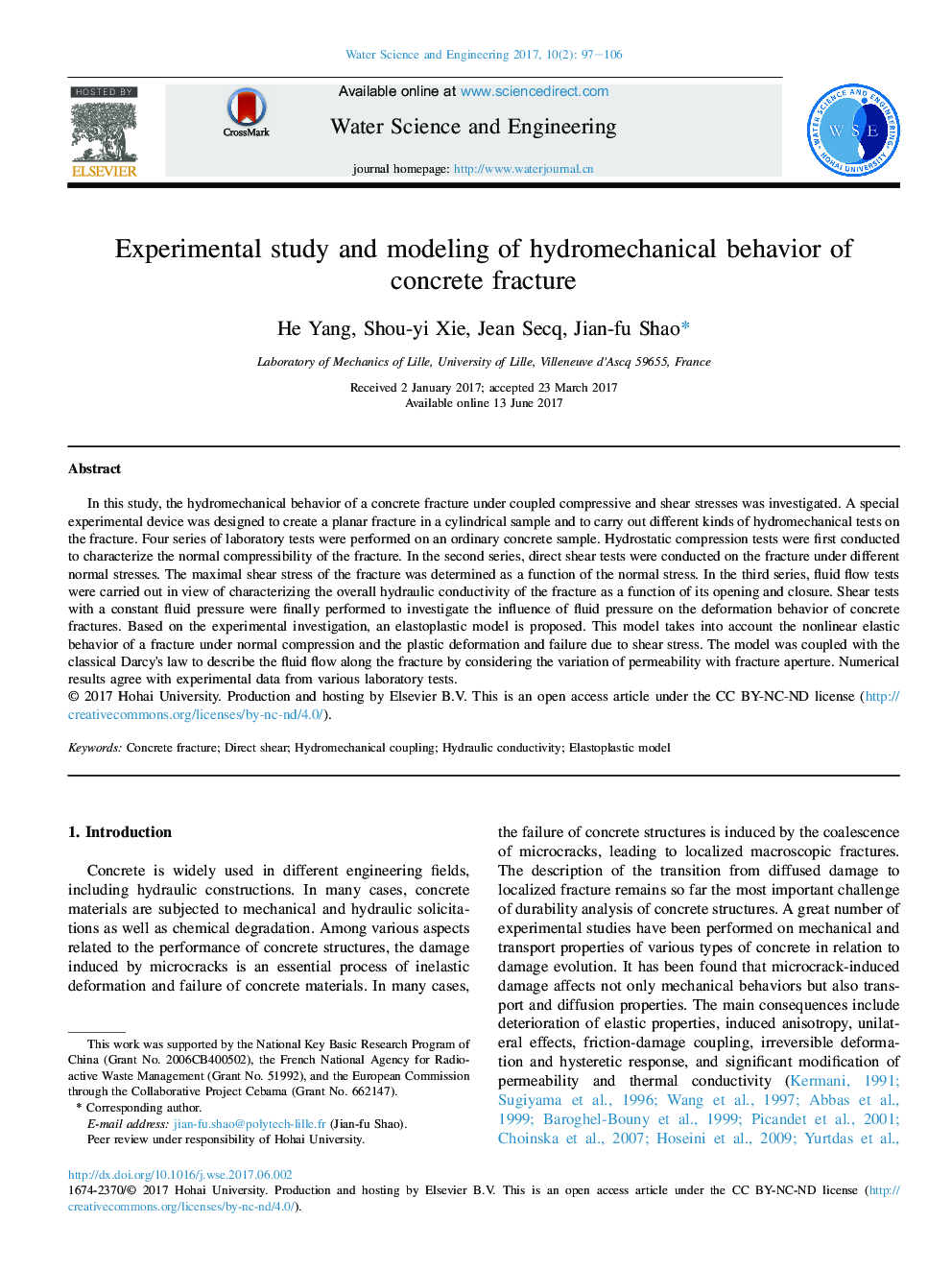| Article ID | Journal | Published Year | Pages | File Type |
|---|---|---|---|---|
| 4929455 | Water Science and Engineering | 2017 | 10 Pages |
In this study, the hydromechanical behavior of a concrete fracture under coupled compressive and shear stresses was investigated. A special experimental device was designed to create a planar fracture in a cylindrical sample and to carry out different kinds of hydromechanical tests on the fracture. Four series of laboratory tests were performed on an ordinary concrete sample. Hydrostatic compression tests were first conducted to characterize the normal compressibility of the fracture. In the second series, direct shear tests were conducted on the fracture under different normal stresses. The maximal shear stress of the fracture was determined as a function of the normal stress. In the third series, fluid flow tests were carried out in view of characterizing the overall hydraulic conductivity of the fracture as a function of its opening and closure. Shear tests with a constant fluid pressure were finally performed to investigate the influence of fluid pressure on the deformation behavior of concrete fractures. Based on the experimental investigation, an elastoplastic model is proposed. This model takes into account the nonlinear elastic behavior of a fracture under normal compression and the plastic deformation and failure due to shear stress. The model was coupled with the classical Darcy's law to describe the fluid flow along the fracture by considering the variation of permeability with fracture aperture. Numerical results agree with experimental data from various laboratory tests.
